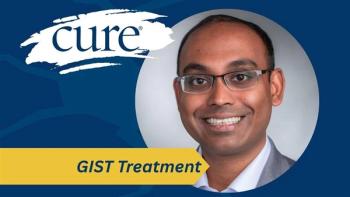
Expert Discusses the Need for Safe and Effective Treatments for Aggressive Follicular Lymphoma
Dr. Kami J. Maddocks discusses the importance of effective treatments for patients with aggressive follicular lymphoma and the treatment challenges they face.
While the National Institute of Health reports that follicular lymphoma has a five-year relative survival rate of 89%, follicular lymphoma has the potential to become aggressive, making it harder to treat, says Dr. Kami J. Maddocks.
In an interview with OncLive®, CURE®’s sister publication, Maddocks, an associate professor of clinical internal medicine in the Division of Hematology at The Ohio State University Comprehensive Cancer Center–James, examined the challenges that exist in treating patients with follicular lymphoma.
In particular, Maddocks noted, patients who relapse within 24 months of completing their first therapy tend to have a more aggressive disease, making it harder for oncologists to find treatments that will produce long-term results.
Follicular lymphoma that turns into aggressive, incurable lymphoma is another challenging issue, according to Maddocks. In these cases, allogeneic transplant is an option, but patients will need to be in treatment for the rest of their lives.
Transcription:
Probably our biggest challenge in patients with treating follicular lymphoma is those patients that we define as the early relapses. So those patients that progress within 24 months of completing their initial therapy, these patients have more aggressively behaved disease, and it's harder to get them long term responses and long-term remissions. This is the greatest challenge we face and there are ongoing trials right now looking at the best treatment for these patients.
When follicular (lymphoma) transforms to aggressive lymphoma, that also represents a challenge for patients. And then this is still you know, outside of an allogeneic transplant, which is rarely done not a curable disease. So, these are treatments, patients are going to deal with this disease on and off for the rest of their life. And so, finding effective, long-lasting and tolerable treatments is really a goal here.
For more news on cancer updates, research and education, don’t forget to





